CRISPR/Cas9 based blockade of IL-10 signaling impairs lipid and tissue homeostasis to accelerate atherosclerosis
- PMID: 36110841
- PMCID: PMC9469689
- DOI: 10.3389/fimmu.2022.999470
CRISPR/Cas9 based blockade of IL-10 signaling impairs lipid and tissue homeostasis to accelerate atherosclerosis
Abstract
Interleukin-10 (IL-10) is a widely recognized immunosuppressive factor. Although the concept that IL-10 executes an anti-inflammatory role is accepted, the relationship between IL-10 and atherosclerosis is still unclear, thus limiting the application of IL-10-based therapies for this disease. Emerging evidence suggests that IL-10 also plays a key role in energy metabolism and regulation of gut microbiota; however, whether IL-10 can affect atherosclerotic lesion development by integrating lipid and tissue homeostasis has not been investigated. In the present study, we developed a human-like hamster model deficient in IL-10 using CRISPR/Cas9 technology. Our results showed that loss of IL-10 changed the gut microbiota in hamsters on chow diet, leading to an increase in lipopolysaccharide (LPS) production and elevated concentration of LPS in plasma. These changes were associated with systemic inflammation, lipodystrophy, and dyslipidemia. Upon high cholesterol/high fat diet feeding, IL-10-deficient hamsters exhibited abnormal distribution of triglyceride and cholesterol in lipoprotein particles, impaired lipid transport in macrophages and aggravated atherosclerosis. These findings show that silencing IL-10 signaling in hamsters promotes atherosclerosis by affecting lipid and tissue homeostasis through a gut microbiota/adipose tissue/liver axis.
Keywords: CRISPR/Cas9; Syrian golden hamster; atherosclerosis; gut microbiota; interleukin-10.
Copyright © 2022 Shi, Guo, Yu, Hou, Liu, Gao, Wei, Zhang, Huang, Wang, Liu, Tontonoz and Xian.
Conflict of interest statement
The authors declare that the research was conducted in the absence of any commercial or financial relationships that could be construed as a potential conflict of interest.
Figures
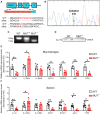

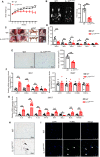


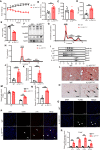
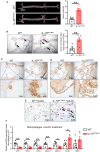
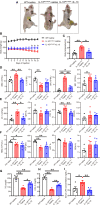
Similar articles
-
Loss of LCAT activity in the golden Syrian hamster elicits pro-atherogenic dyslipidemia and enhanced atherosclerosis.Metabolism. 2018 Jun;83:245-255. doi: 10.1016/j.metabol.2018.03.003. Epub 2018 Mar 9. Metabolism. 2018. PMID: 29526535
-
Curcuma oil attenuates accelerated atherosclerosis and macrophage foam-cell formation by modulating genes involved in plaque stability, lipid homeostasis and inflammation.Br J Nutr. 2015 Jan 14;113(1):100-13. doi: 10.1017/S0007114514003195. Epub 2014 Nov 13. Br J Nutr. 2015. PMID: 25391643
-
The high-fat high-fructose hamster as an animal model for niacin's biological activities in humans.Metabolism. 2013 Dec;62(12):1840-9. doi: 10.1016/j.metabol.2013.08.001. Epub 2013 Sep 13. Metabolism. 2013. PMID: 24035454
-
Role of microbiota-derived lipopolysaccharide in adipose tissue inflammation, adipocyte size and pyroptosis during obesity.Nutr Res Rev. 2018 Dec;31(2):153-163. doi: 10.1017/S0954422417000269. Epub 2018 Jan 24. Nutr Res Rev. 2018. PMID: 29362018 Review.
-
Hepatic Lipid Metabolism Disorder and Atherosclerosis.Endocr Metab Immune Disord Drug Targets. 2022;22(6):590-600. doi: 10.2174/1871530322666211220110810. Endocr Metab Immune Disord Drug Targets. 2022. PMID: 34931971 Review.
Cited by
-
Targeting immune cell recruitment in atherosclerosis.Nat Rev Cardiol. 2024 Nov;21(11):824-840. doi: 10.1038/s41569-024-01023-z. Epub 2024 Apr 25. Nat Rev Cardiol. 2024. PMID: 38664575 Review.
-
Gut microbiota regulate atherosclerosis via the gut-vascular axis: a scoping review of mechanisms and therapeutic interventions.Front Microbiol. 2025 Aug 8;16:1606309. doi: 10.3389/fmicb.2025.1606309. eCollection 2025. Front Microbiol. 2025. PMID: 40862134 Free PMC article.
-
Potential therapeutic targets of macrophages in inhibiting immune damage and fibrotic processes in musculoskeletal diseases.Front Immunol. 2023 Jul 20;14:1219487. doi: 10.3389/fimmu.2023.1219487. eCollection 2023. Front Immunol. 2023. PMID: 37545490 Free PMC article. Review.
-
Prognostic value of lipid variability for recurrence and mortality in elderly patients with acute ischemic cerebrovascular disease.Am J Transl Res. 2025 Jun 15;17(6):4651-4662. doi: 10.62347/RFBV1794. eCollection 2025. Am J Transl Res. 2025. PMID: 40672598 Free PMC article.
-
Associations of the circulating levels of cytokines with the risk of myeloproliferative neoplasms: a bidirectional mendelian-randomization study.BMC Cancer. 2024 Apr 26;24(1):531. doi: 10.1186/s12885-024-12301-x. BMC Cancer. 2024. PMID: 38671390 Free PMC article.
References
-
- Arnett DK, Blumenthal RS, Albert MA, Buroker AB, Goldberger ZD, Hahn EJ, et al. . 2019 ACC/AHA guideline on the primary prevention of cardiovascular disease: A report of the American college of Cardiology/American heart association task force on clinical practice guidelines. Circulation (2019) 140(11):e596–646. doi: 10.1161/CIR.0000000000000725 - DOI - PMC - PubMed
Publication types
MeSH terms
Substances
LinkOut - more resources
Full Text Sources
Medical
Molecular Biology Databases

